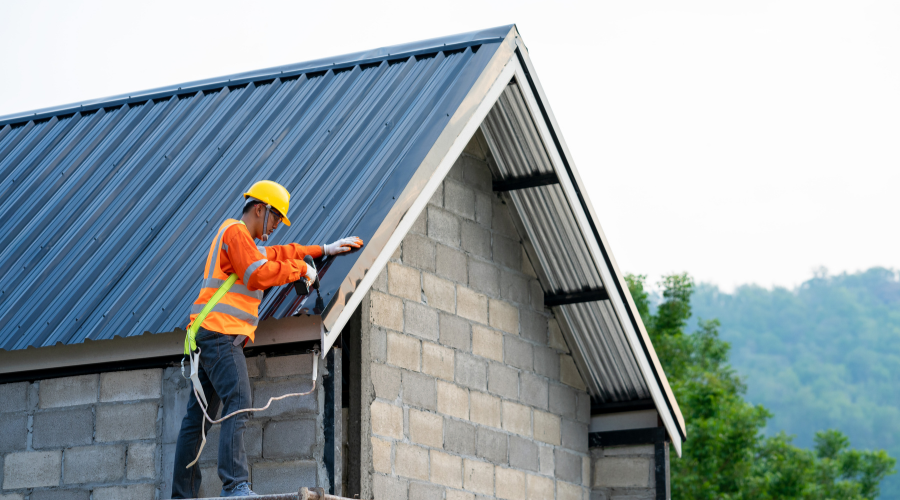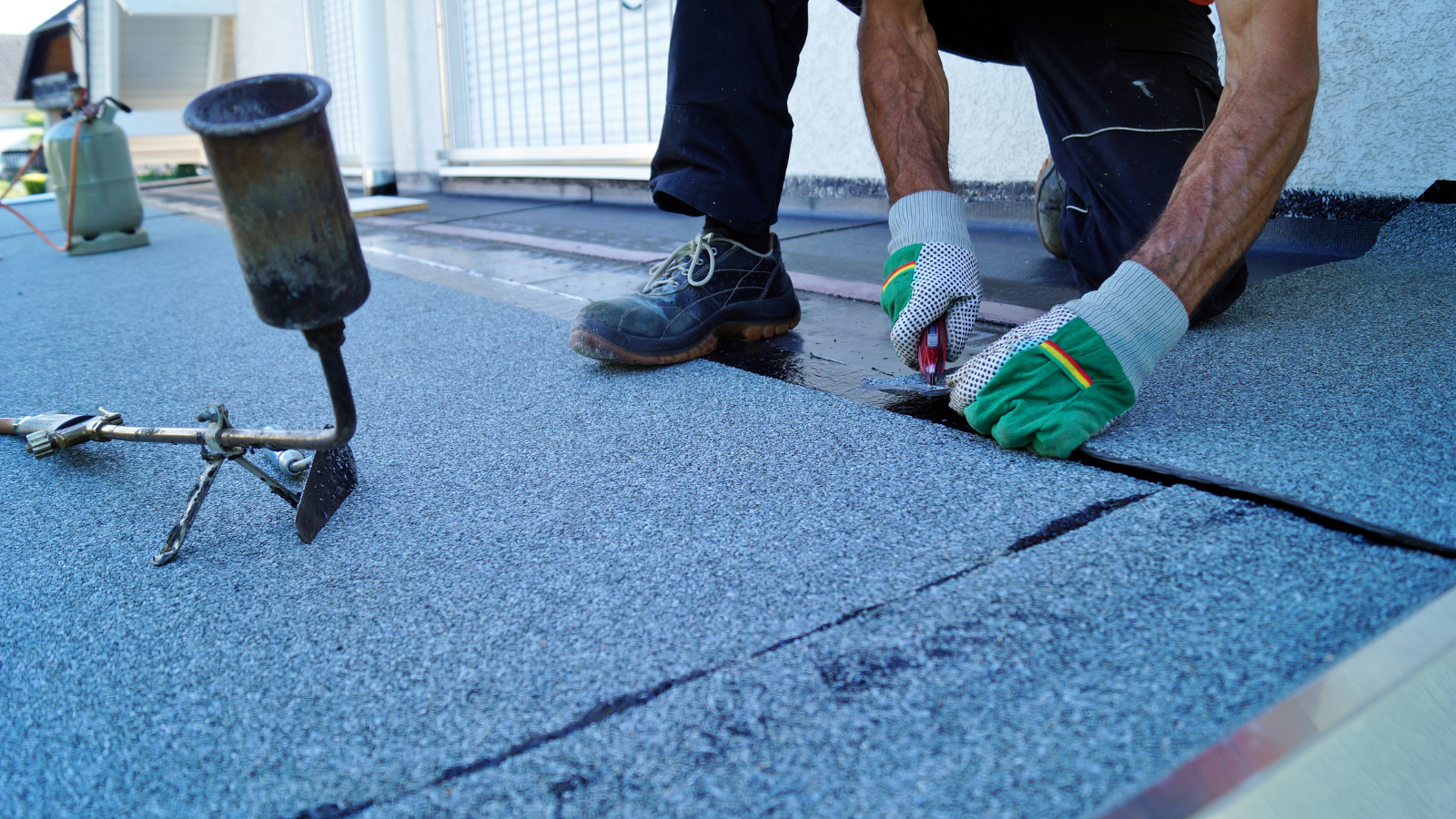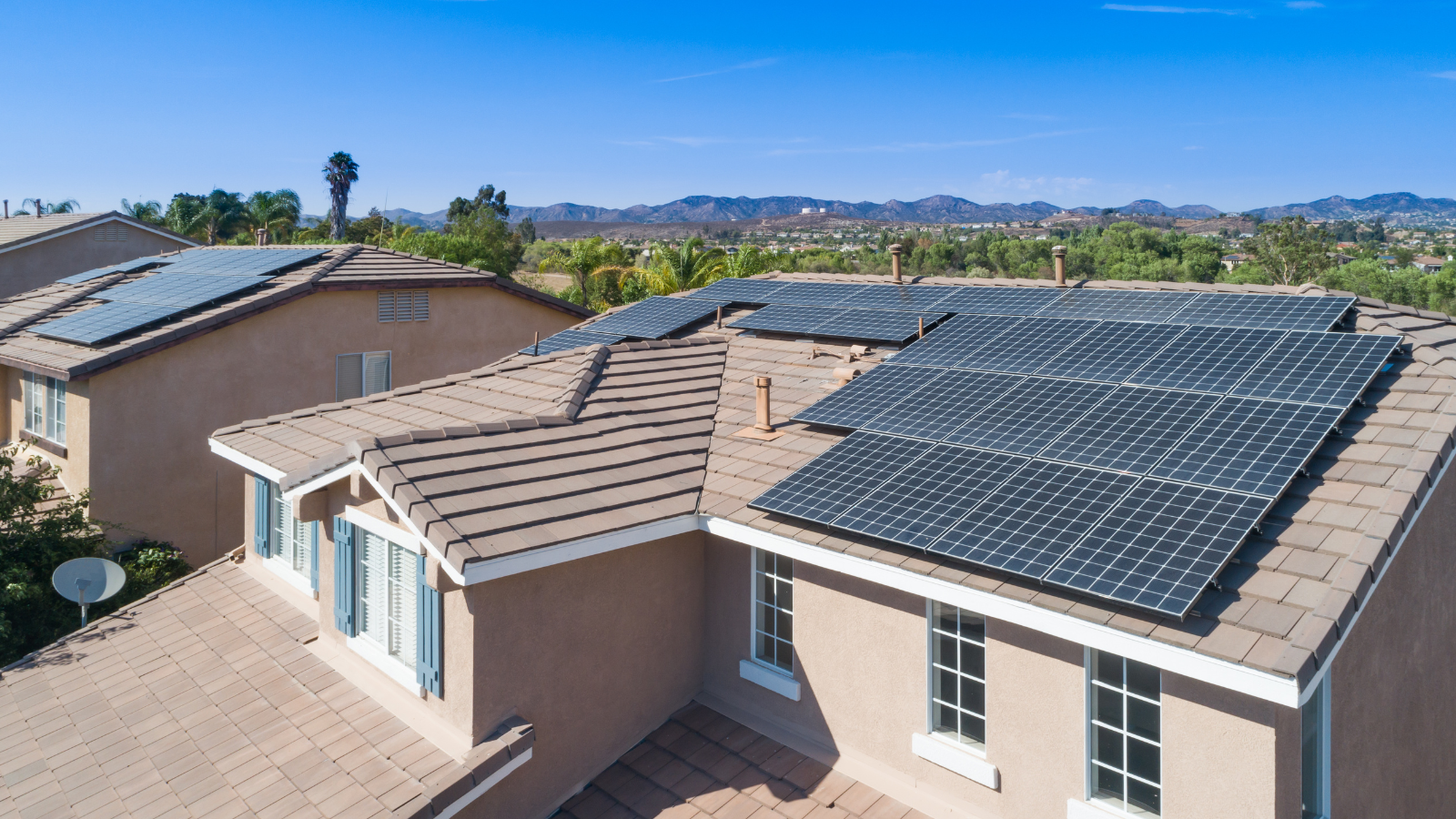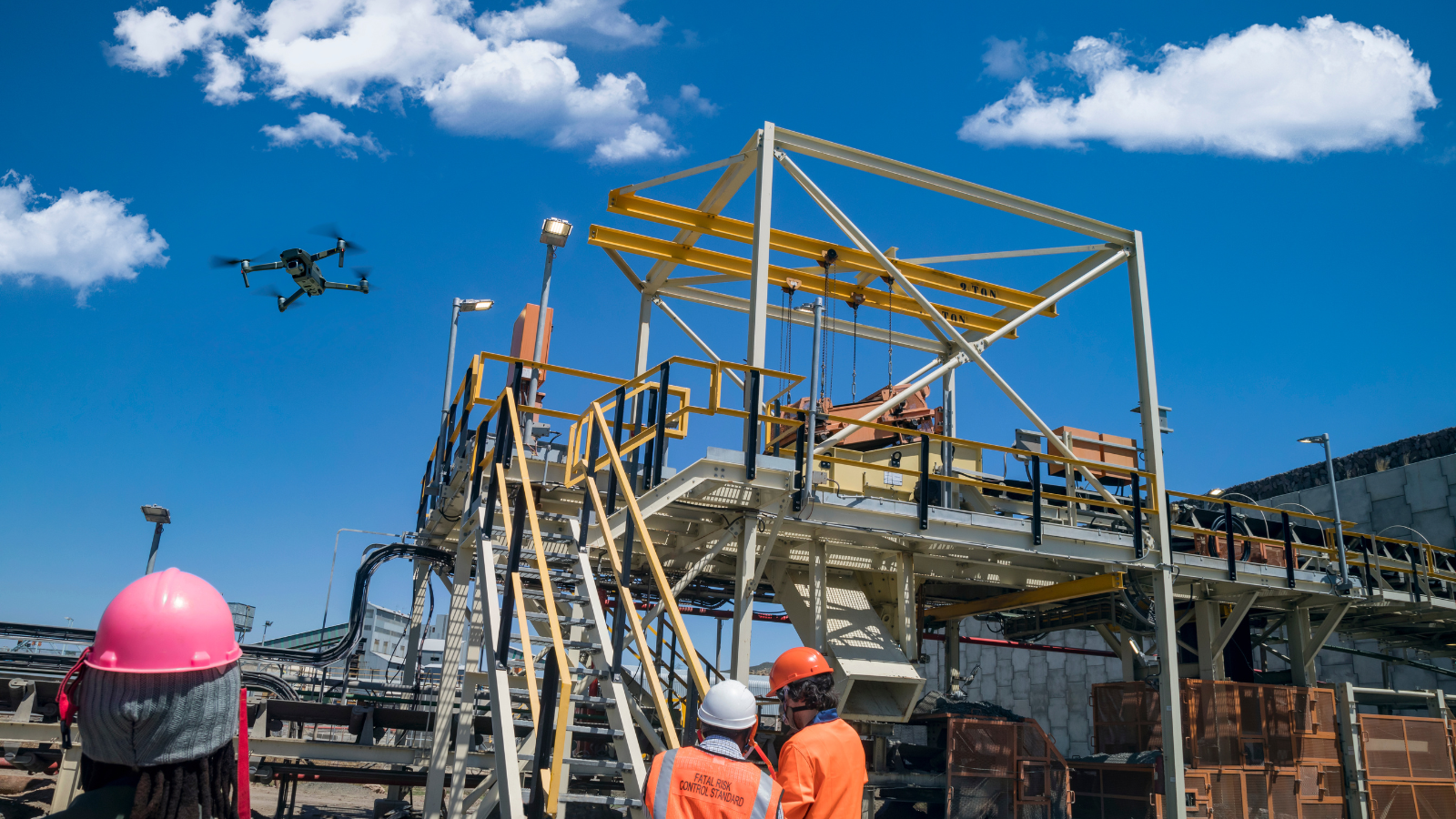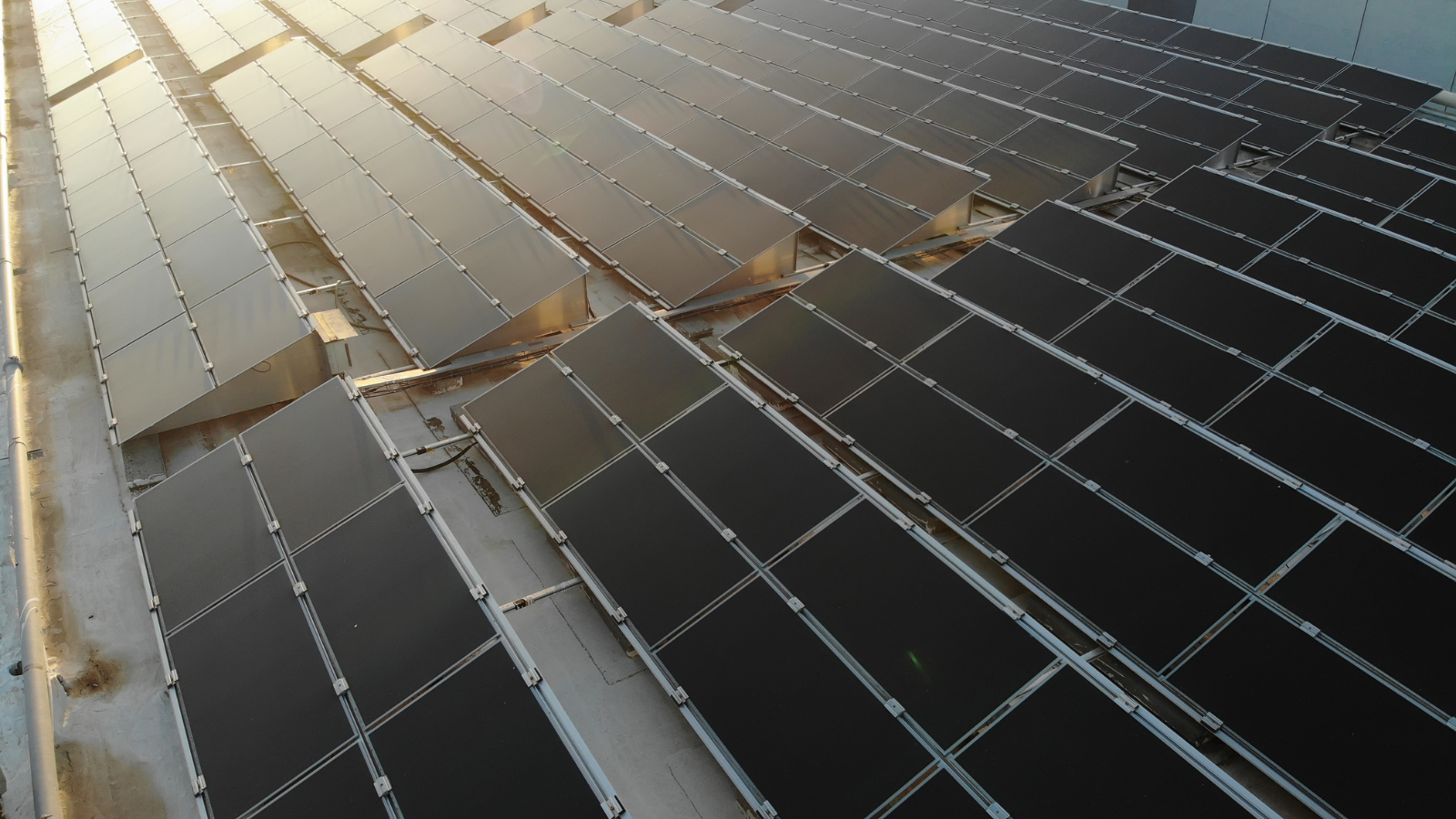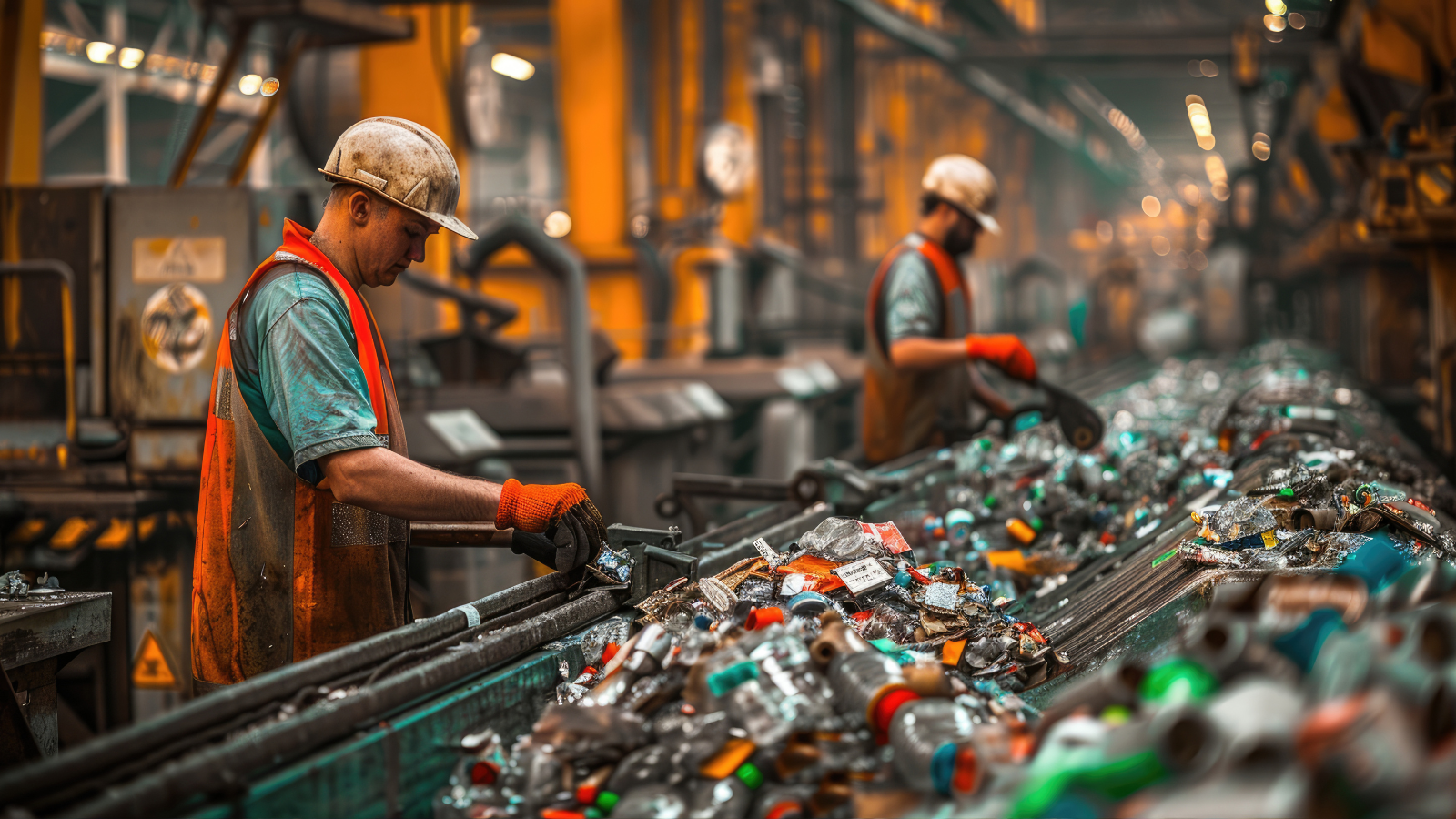Your roof is more than just a cover for your home—it’s your first line of defense against the elements. Maintaining your roof on a regular basis will help it last longer and avoid expensive repairs. Here’s how to protect this vital part of your home.
Key Takeaways:
- Roof maintenance helps prevent expensive repairs by catching minor issues early.
- Regular inspections, cleaning gutters, trimming trees, and clearing debris are essential.
- Professional roofers can spot hidden issues and offer expert advice.
- Proper roof care improves energy efficiency, prevents water damage, and extends roof life.
Why Roof Maintenance Matters
A well-maintained roof doesn’t just protect your home from rain, snow, or harsh sunlight—it is a key component in preserving the integrity of your home overall. From preventing water leaks to protecting insulation and improving your home’s energy efficiency, regular roof care is an investment in your safety and budget. When roof problems are left unchecked, they can quickly escalate into significant structural damage that’s expensive to fix. Routine maintenance can help detect and address these issues early on, ensuring that your roof stays in excellent condition for as long as possible.
Benefits of Regular Roof Maintenance:
- Prevents Costly Repairs: Catching minor issues early can prevent more extensive, more expensive repairs down the line.
- Extends Roof Lifespan: Just as regular oil changes extend the life of your car, roof maintenance can help ensure that your roof lasts its entire lifespan.
- Improves Energy Efficiency: A well-maintained roof provides better insulation, potentially lowering energy bills by improving temperature control inside your home.
- Prevents Water Damage: Roof leaks, when not promptly addressed, can lead to extensive water damage inside your home, resulting in mold, rot, and weakened structural elements.
- Boosts Home Value: A properly maintained roof adds value to your home, which is crucial when selling or refinancing.
Essential Roof Maintenance Strategies
Proper roof maintenance doesn’t require advanced knowledge of roofing materials—it’s about being diligent in noticing identifying wear and tear indicators and taking preventative action. Here are seven key strategies that every homeowner can follow:
Regular Roof Inspections
Inspect your roof at least twice a year—ideally during the spring and fall—when weather conditions are milder. These inspections should look for the following:
- Missing, cracked, or curling shingles.
- Signs of sagging in roof sections.
- Water stains inside your attic or ceiling (a clear sign of leaks).
- Loose or damaged flashing around chimneys, vents, and skylights.
Clean Your Gutters
Clogged gutters prevent water from flowing away from your roof, potentially causing damage to both the roof and the foundation of your home. Ensure your gutters are clear of debris, especially when leaves are falling in the fall. Using gutter guards can also reduce maintenance and minimize the risk of clogs.
Trim Overhanging Branches
Branches that hover over your roof can scrape against shingles, causing damage over time. They can also fall during a storm, causing immediate harm. Trim back branches too close to your roof and keep trees at a safe distance to reduce the risk of debris falling on your roof.
Repair Damaged Shingles Immediately
Any damaged shingles—whether cracked, missing, or curled—should be changed right once to stop water from leaking beneath the roofing material. This proactive measure will also avoid rot and mold growth within your home.
Clear Debris from the Roof
Leaves, twigs, and other debris can trap moisture, giving moss and algae a place to grow. These can deteriorate your roof’s integrity, so it’s crucial to clear it regularly. A broom or leaf blower can effectively remove debris without damaging shingles.
Check Flashing and Seals
The flashing around chimneys, vents, and skylights is designed to prevent water from infiltrating the home. It can let water seep in if it becomes loose, cracked, or corroded. Inspect flashing during your regular roof checks and replace or repair it as needed.
Schedule Professional Maintenance
While some maintenance tasks are simple, others require professional expertise. A qualified roofer can thoroughly inspect, especially for larger roofs or hard-to-reach areas. They can also help with complex issues that a homeowner might find difficult to identify.
Conclusion
Roof maintenance is one of homeownership’s most important yet often overlooked aspects. By maintaining your roof with routine examinations, timely repairs, and proper cleaning, you can avoid costly repairs, improve your home’s energy efficiency, and ensure your roof lasts for years. Even though it might seem like a small task, addressing roof issues early can save you significant time and money. Make roof care a priority, and your home will thank you.
FAQs About Roof Maintenance
Q1: How frequently should my roof be inspected?
Inspecting your roof at least twice a year—once in the spring and once in the fall is recommended. Additionally, you should perform a quick inspection after a severe storm to check for any damage.
Q2: Can I maintain my roof myself?
Yes, homeowners can perform essential maintenance such as cleaning gutters, trimming overhanging branches, and clearing debris. However, it’s best to hire a professional for more technical tasks like checking flashing or repairing shingles.
Q3: What happens if I don’t maintain my roof?
Without regular maintenance, minor issues like missing shingles or clogged gutters can escalate into major problems, such as leaks, water damage, or mold. This can lead to expensive repairs or even premature roof replacement.
Q4: How do I know if my roof needs to be replaced?
If your roof is over 20 years old, has significant damage, or shows signs of widespread wear, consider a replacement. A roofing professional can provide a thorough evaluation to determine whether repair or replacement is necessary.
Q5: Is roof maintenance costly?
Roof maintenance is less expensive than major repairs or full roof replacements. Regular upkeep helps catch problems early, saving homeowners money in the long run by preventing extensive damage.
Q6: How do I protect my roof during severe weather?
Ensure your roof is debris-free before a storm, trim any overhanging branches, and secure loose roofing materials. Look for damage to your roof after a storm. and have it repaired immediately to prevent leaks.
By following these roof maintenance tips, you can ensure that your roof remains a durable, protective shield for your home for years to come. In addition to keeping your house safe, routine upkeep may also boost its value and energy efficiency, making it a worthwhile investment. To Learn More Contact Wayne Roofing Company

